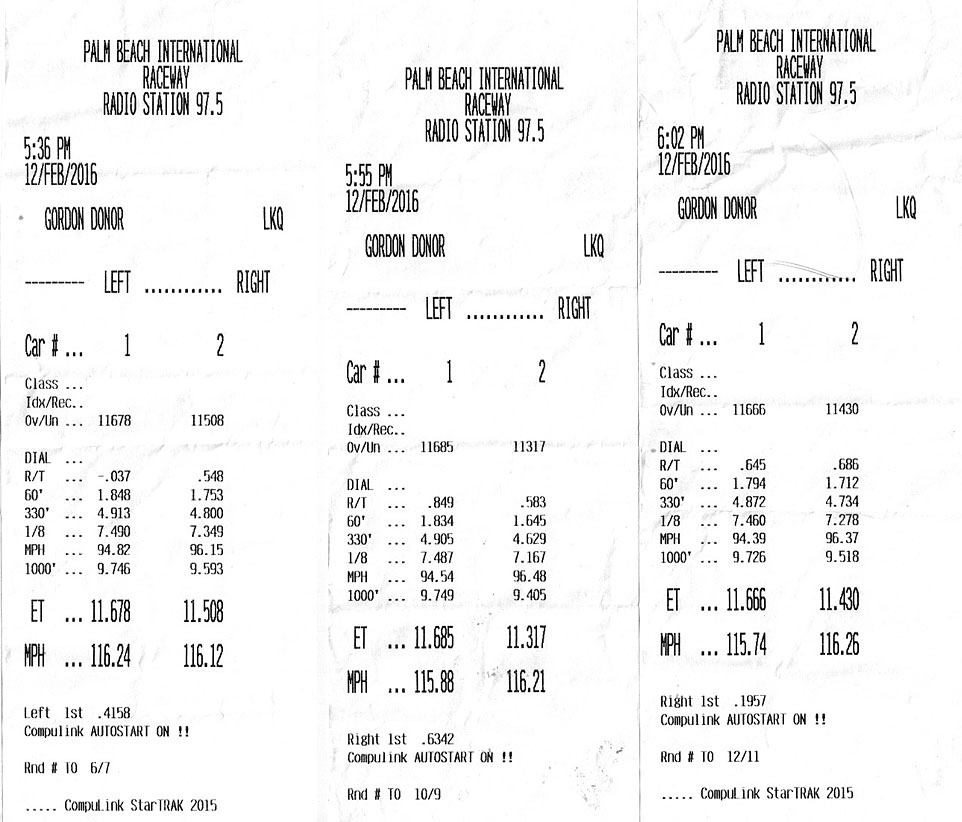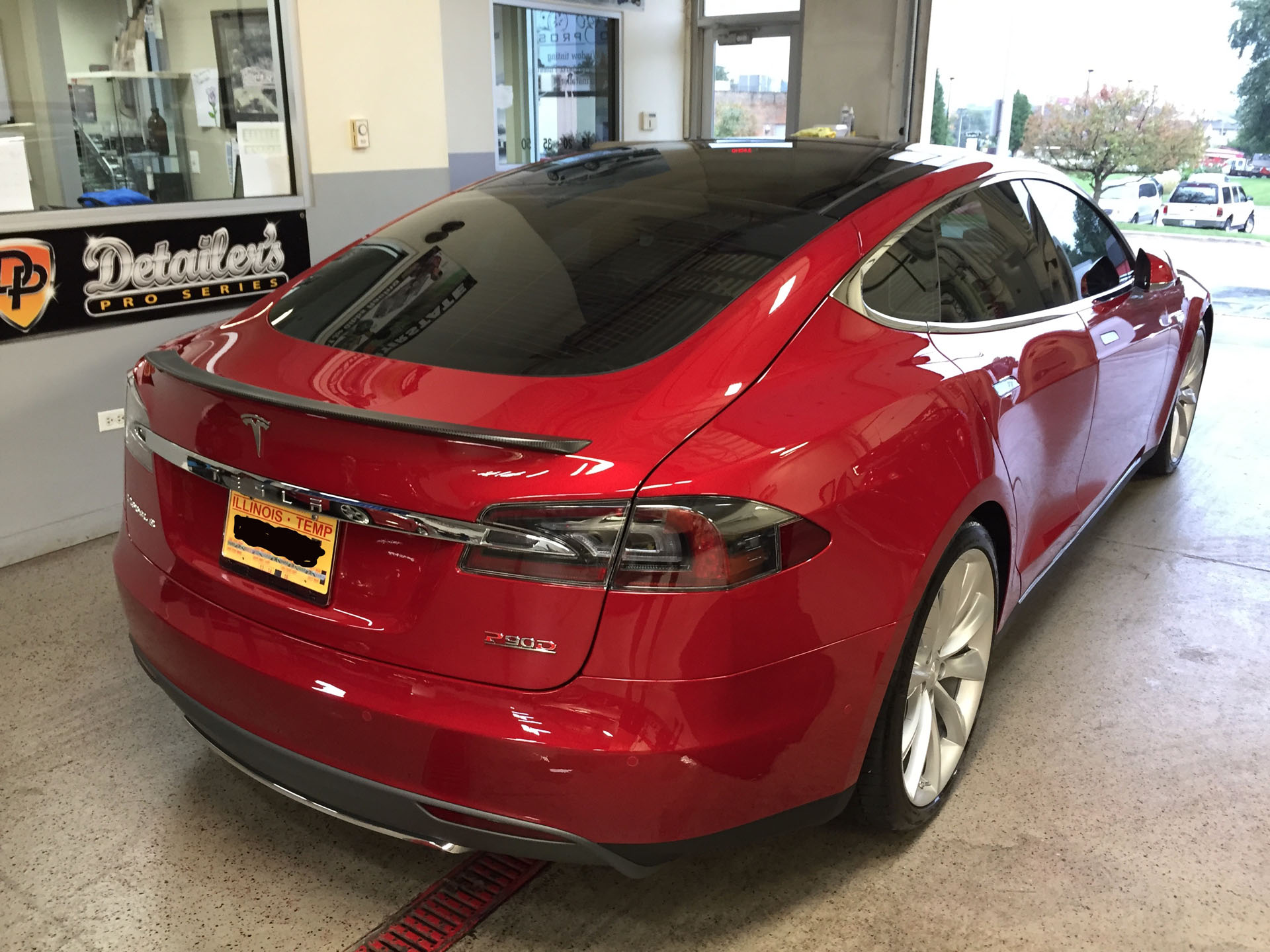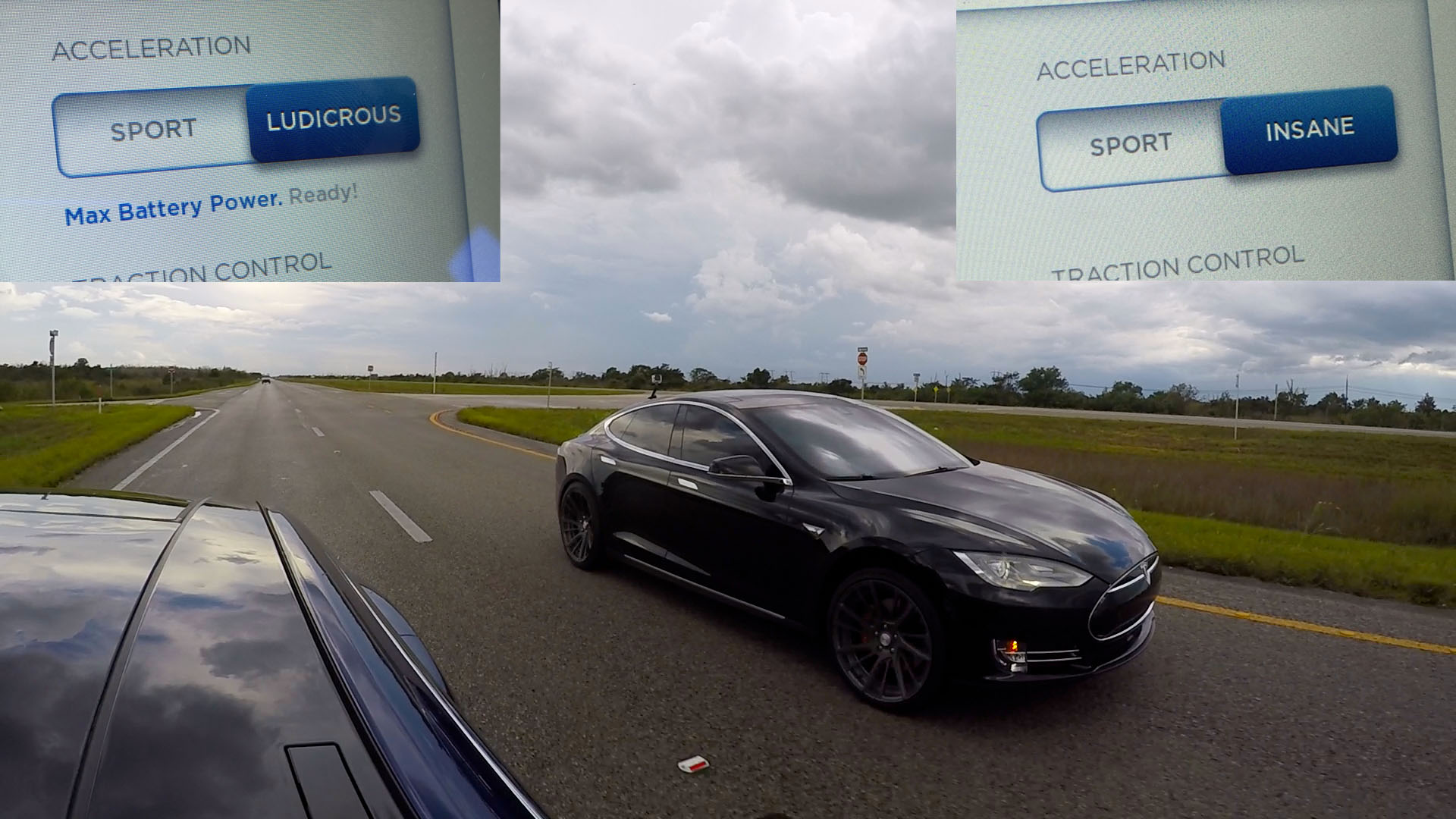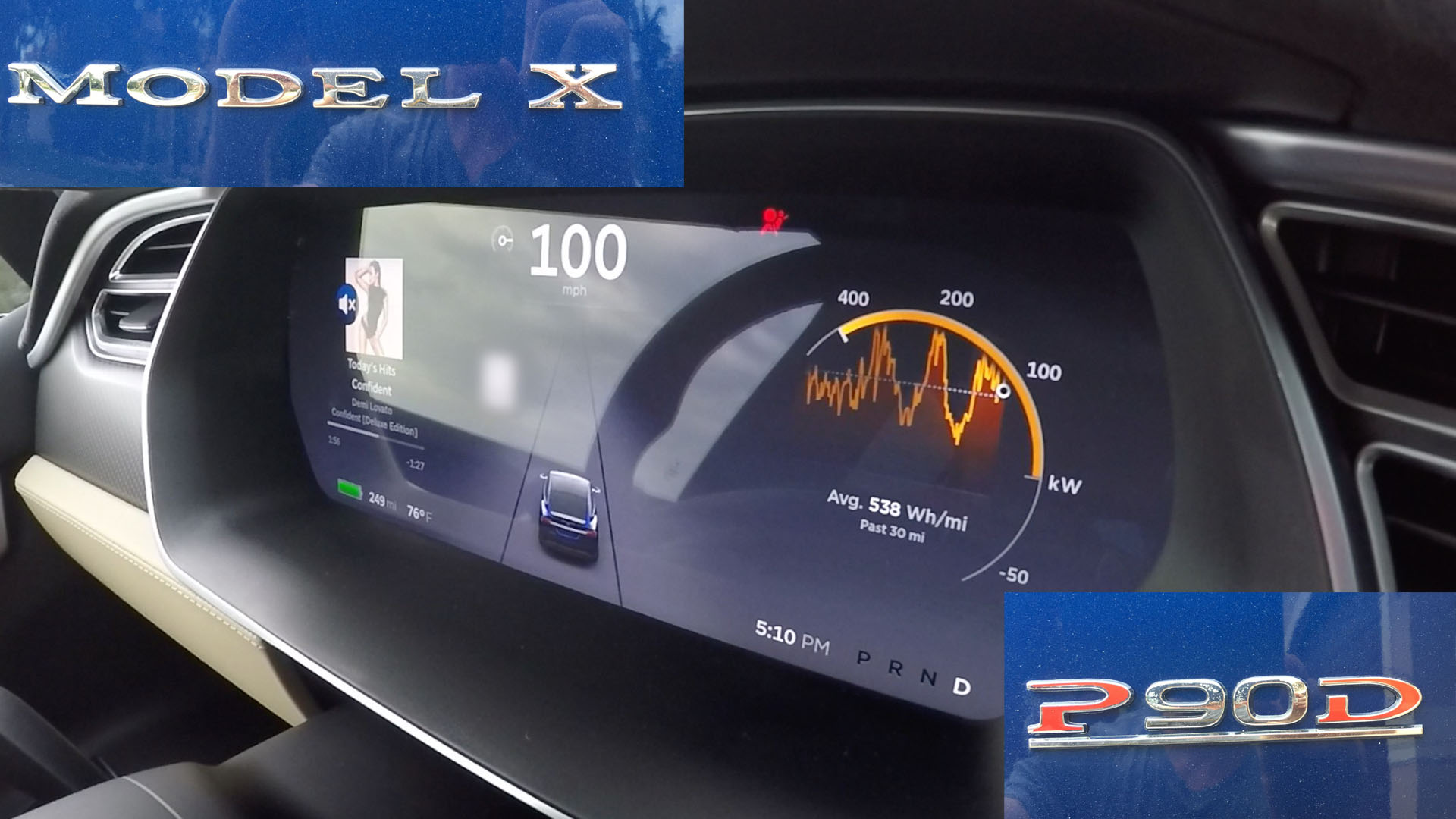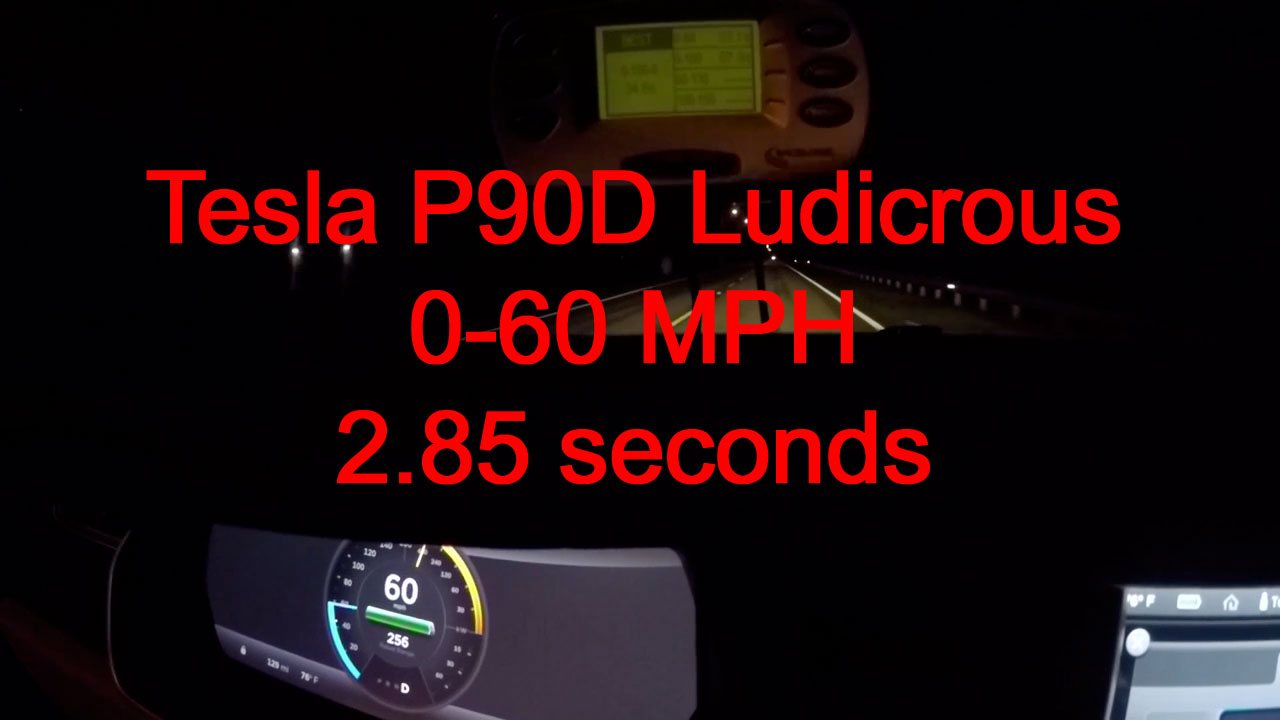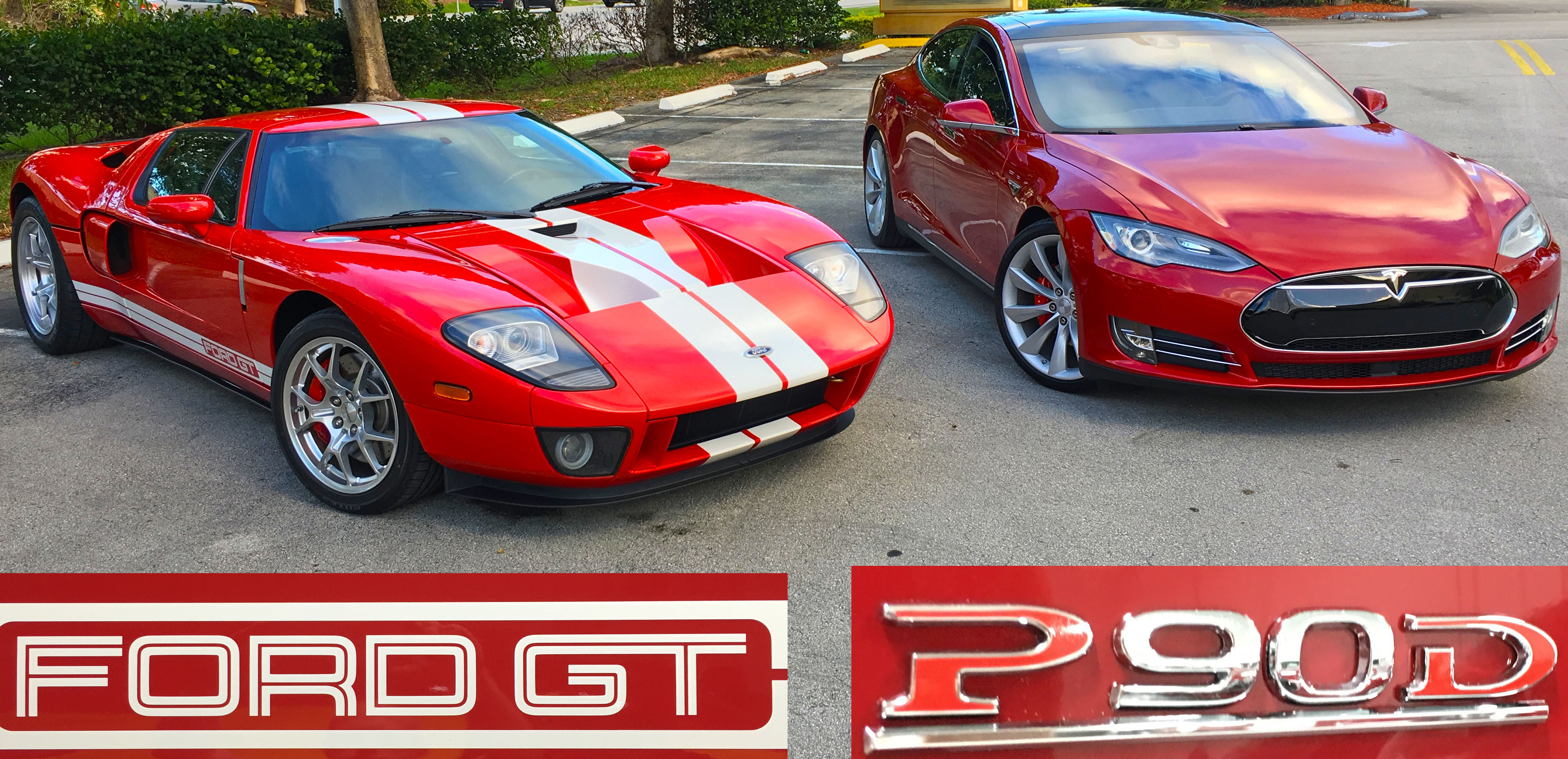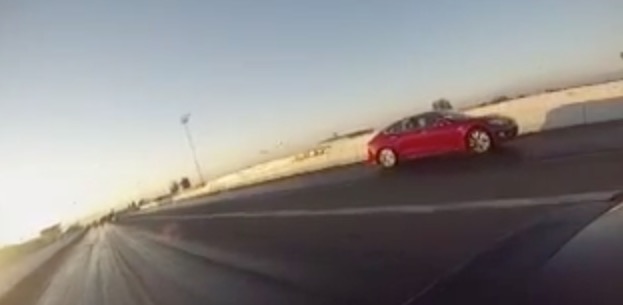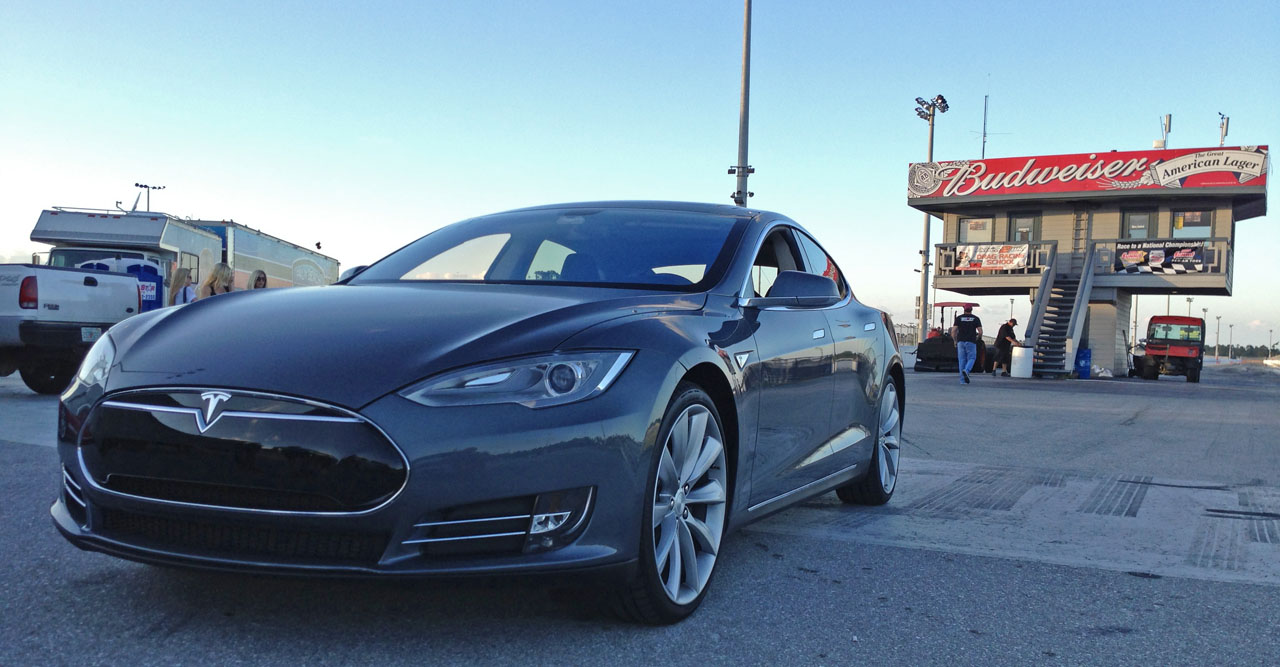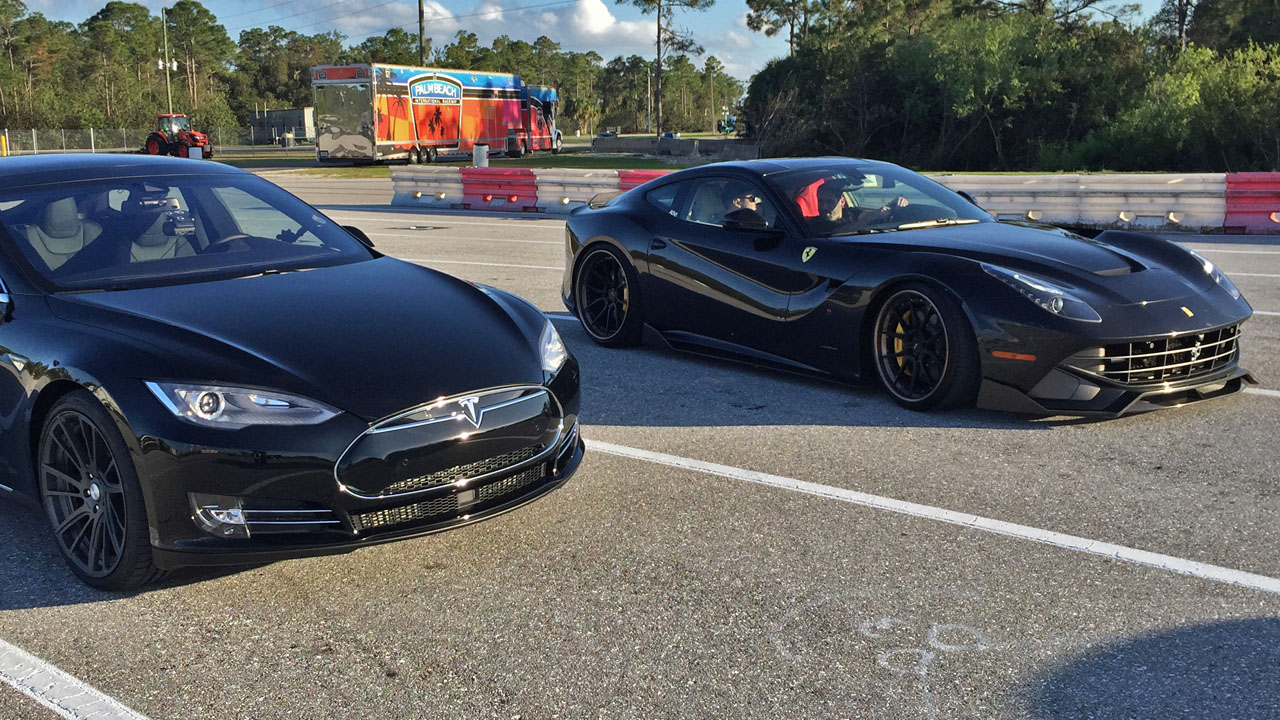Tesla Model X vs Model S P90D Ludicrous – World Record Set During Husband vs Wife Drag Racing 1/4 Mile Showdown
February 14th, 2016We have some great heads up drag racing and performance comparisons between the all new and hard to come by 2016 Tesla Model X P90D Ludicrous in Deep Blue Metallic (photo gallery) running against a 2015 Tesla Model S P90D Ludicrous. Tesla’s Model X (SUV) and Model S (Sedan) P90D share the same powertrain with dual motors, a 503 HP rear motor and a 259 HP front motor. While the motors are capable of a combined 762 HP, the power is limited to what the battery can provide which is currently 463HP (Insane Mode). When the X or S is ordered with the $10,000 Ludicrous Mode the useable power gets a 69 HP bump to 532 HP.
In this review we’re comparing the Model X and Model S P90D with Ludicrous options as well as every other option available for both vehicles (sans the rear jump seats in the Models S). While both cars we’re testing have the same powertrain there is one signifiant difference that should effect performance, weight and aerodynamics. The Model X is heavier weighing in at ~5,500 pounds, around 600 pounds more than the Model S.
With both cars charged up we headed for Palm Beach International Raceway, a 90 mile trip. Along the way we stopped at the Tesla Supercharger in West Palm Beach, conveniently located just 15 miles from the track. We set both cars to charge to 100% so we could have max power for the races and after ~40 minutes we were ready to go.
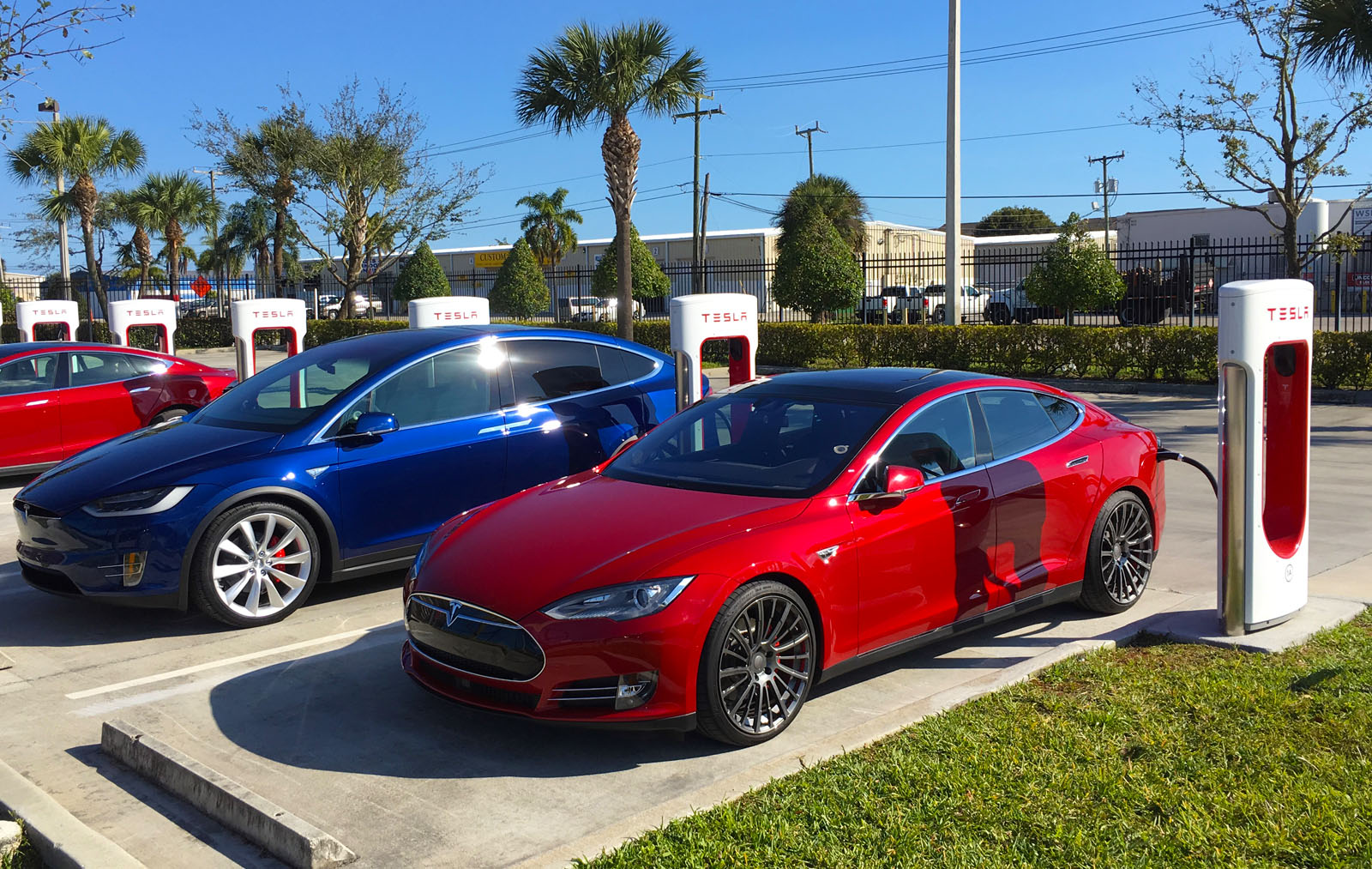
One interesting data point we obtained during the 65 mile trip to the supercharger was the energy used by both cars. At around 75 MPH the Model X consumed 28.3 kWh (Avg 440 Wh/mi) while the Model S used 22.7 kWh (Avg 349 Wh/mi). This is quite a difference showing how the extra weight of the X can effect range and energy usage.
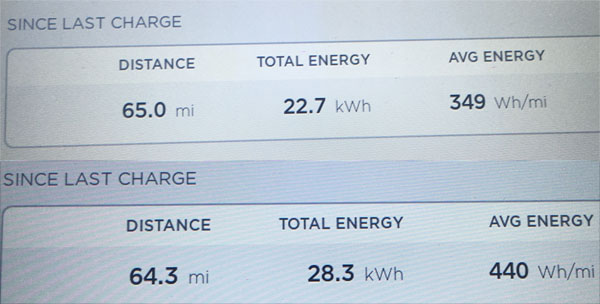
After arriving at the track we enabled the “Max Battery Power” option on both cars which also enables Tesla’s “Launch Mode” and plugged in both cars to the 40 amp RV outlets provided by Palm Beach International Raceway while we setup multiple cameras to capture all the action.
With a previous best time of 11.24 @ 118.5 MPH for the Model S we set out to see how the heavier Model X would do when racing heads up. We also added little twist to this comparison, since the Model X is the wife’s car, we set her up to race the Model X vs myself driving the Model S. She had never raced a car down the 1/4 mile, never mind a car that has the potential to take down unsuspecting super cars.
The results as you’ll see in the videos, pictures and data were very impressive with the Model X P90D Ludicrous running 11.61 @ 116 MPH in the 1/4 mile setting a new world record for the quickest production SUV/CUV. 0-60 MPH came up in just 3.1 seconds with 0-100 MPH in 7.9 seconds as per the VBOX data. Even as we did multiple races trying to get an even start between the two cars, the Model X continued to perform running consecutive 11.6x @ 115+ MPH passes down the 1/4 mile. The Model S ran 11.3-11.5 @ 116 MPH, check out the video below to see what these differences translate to when racing heads up.
Video:
Given the weight/aero differences and how close these races were, especially at higher speeds after the initial launch, we have to consider that the Model X could be making more power than the Model S. Maybe an upcoming software update for the Model S will increase power and performance, enabling the elusive 10.9 second 1/4 mile run that Tesla specifies for the Model S P90D Ludicrous. If you’re looking for a Model X a few have been selling at quite a premium due to limited availability, check out the listings over at duPont registry.
VBOX Comparison:
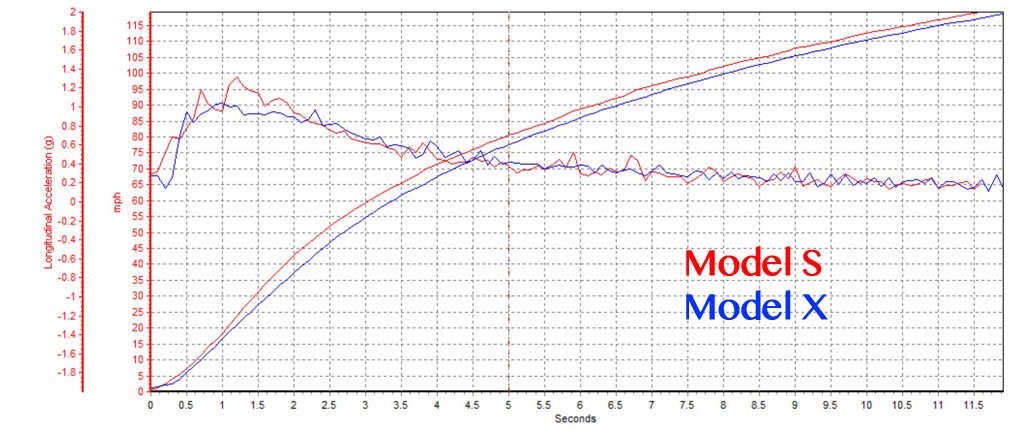
Timeslip Data:
Resources:


